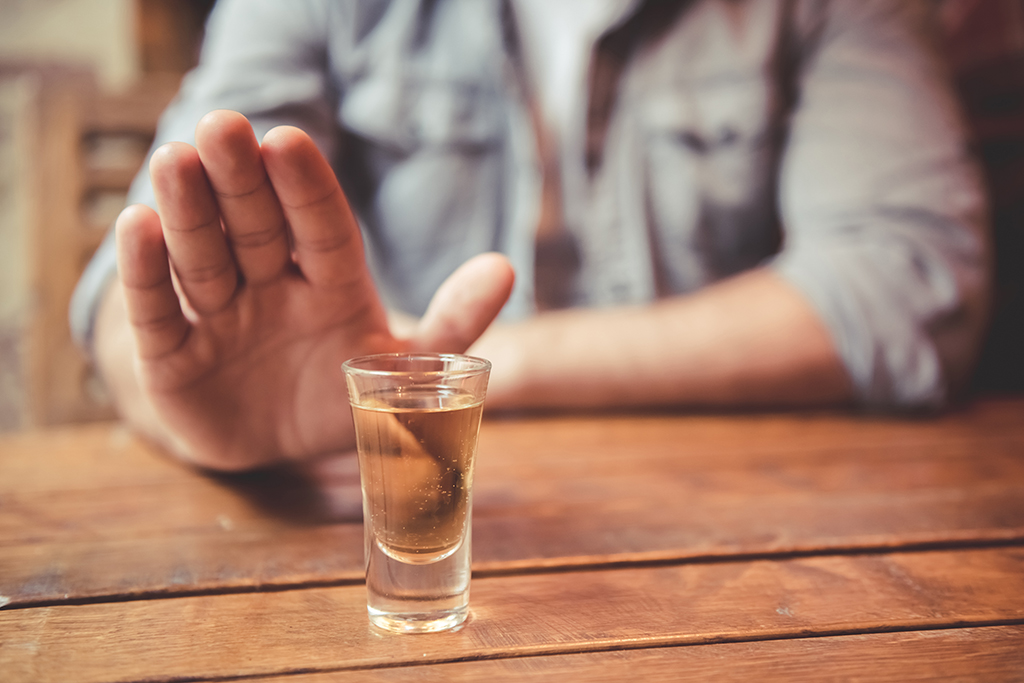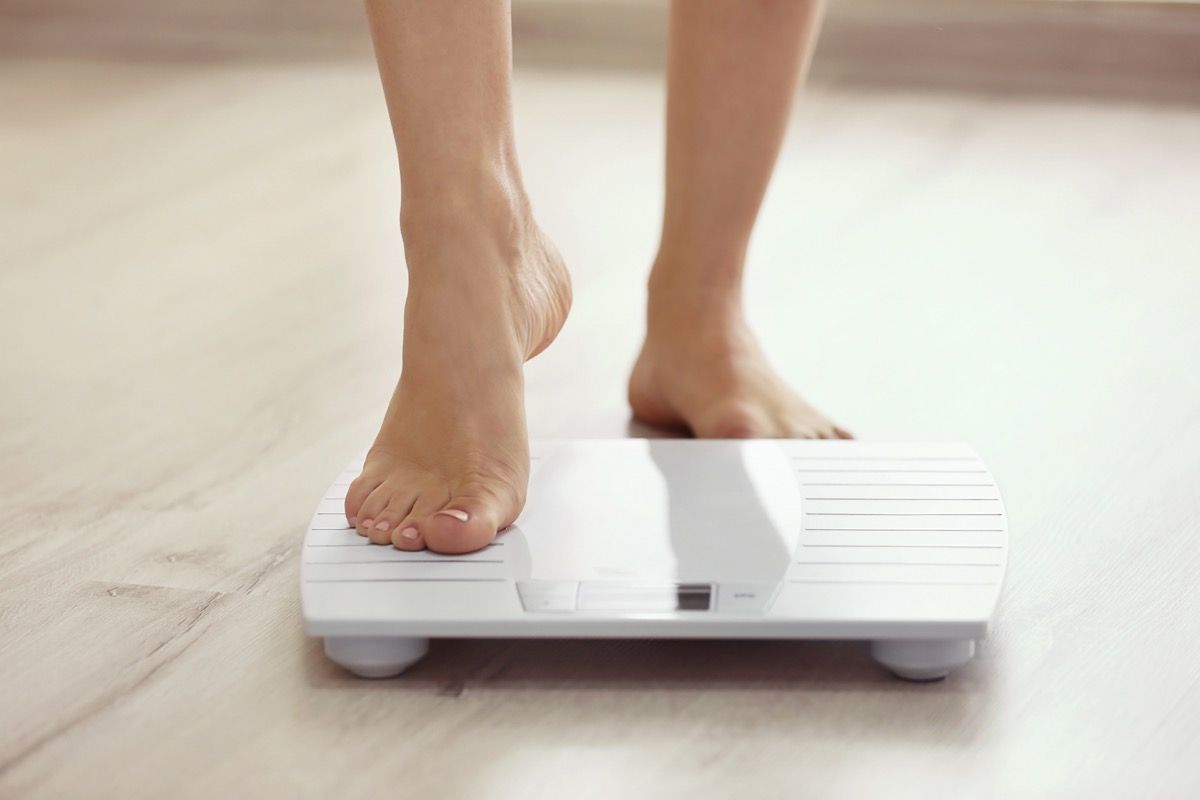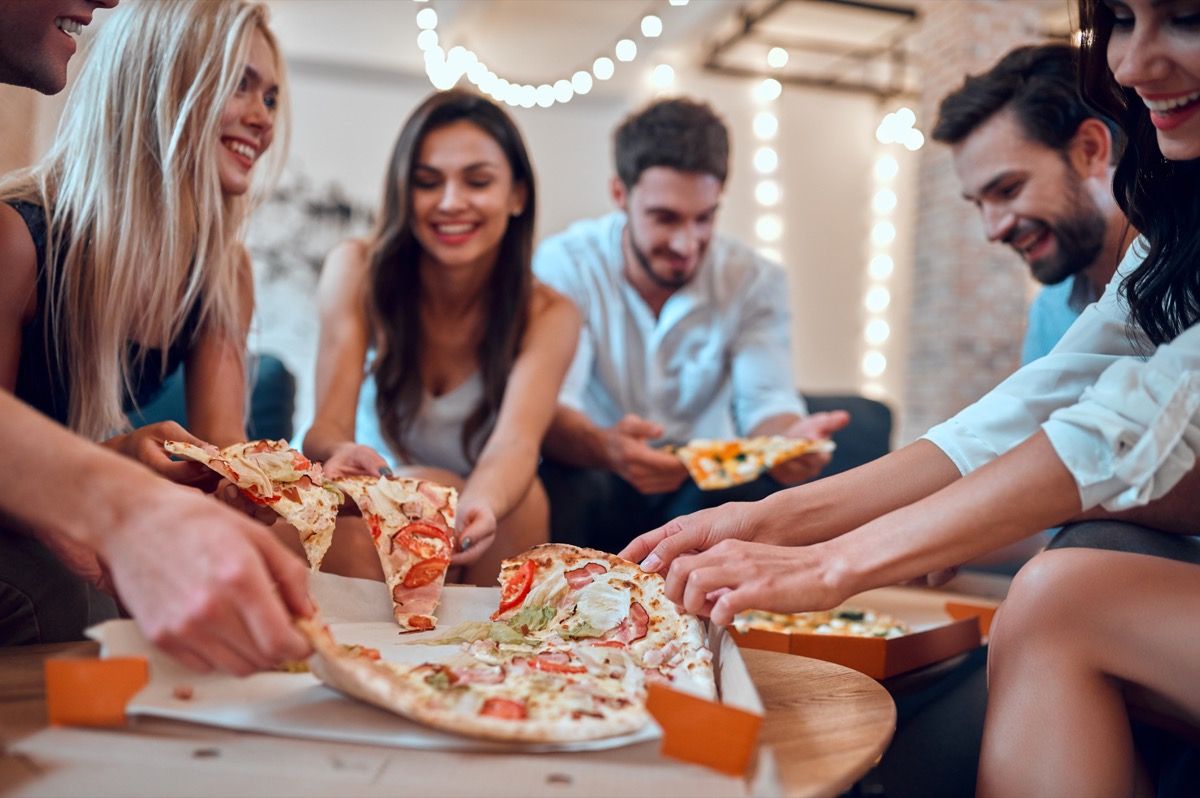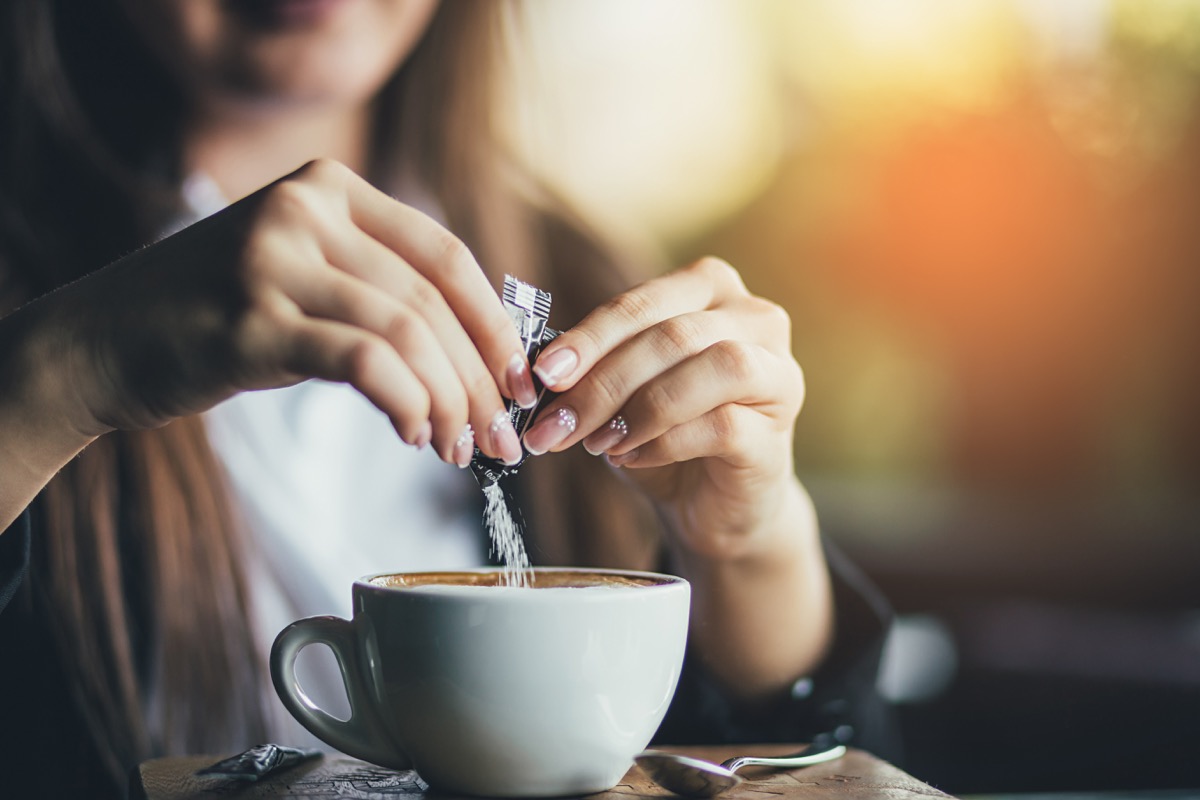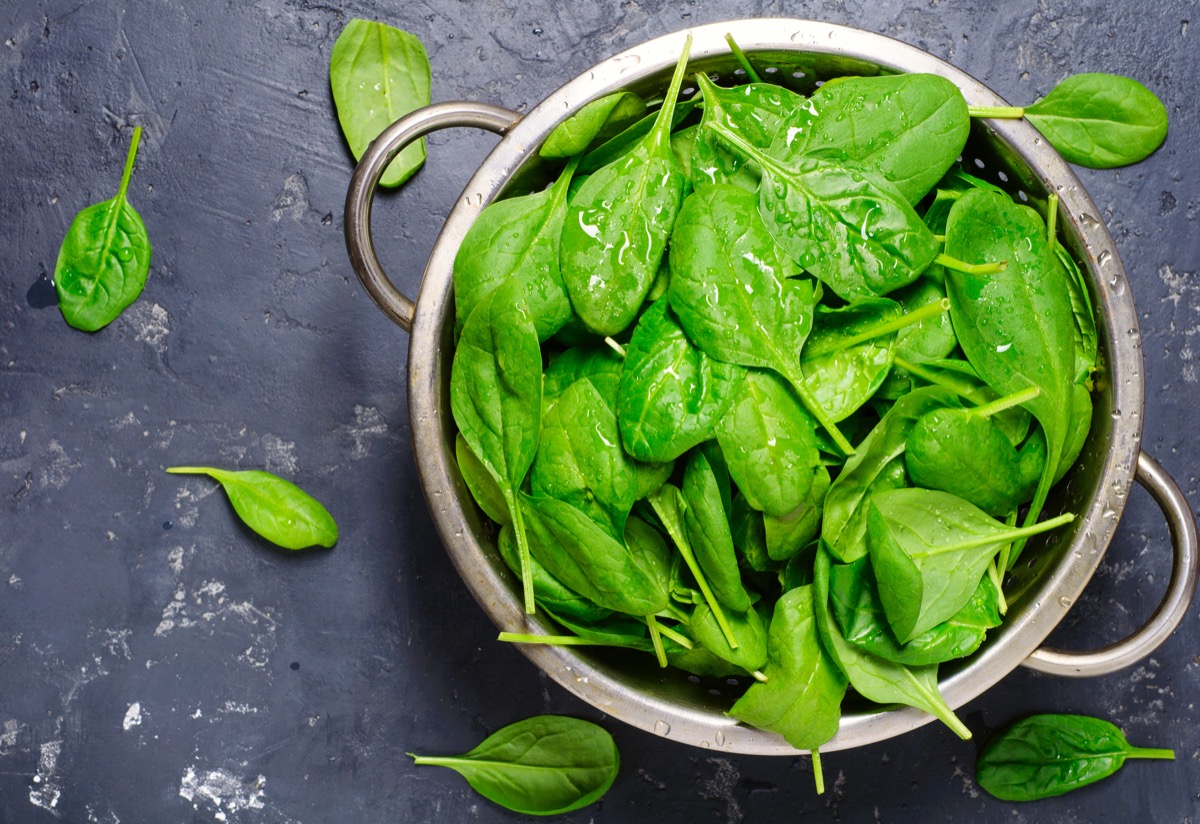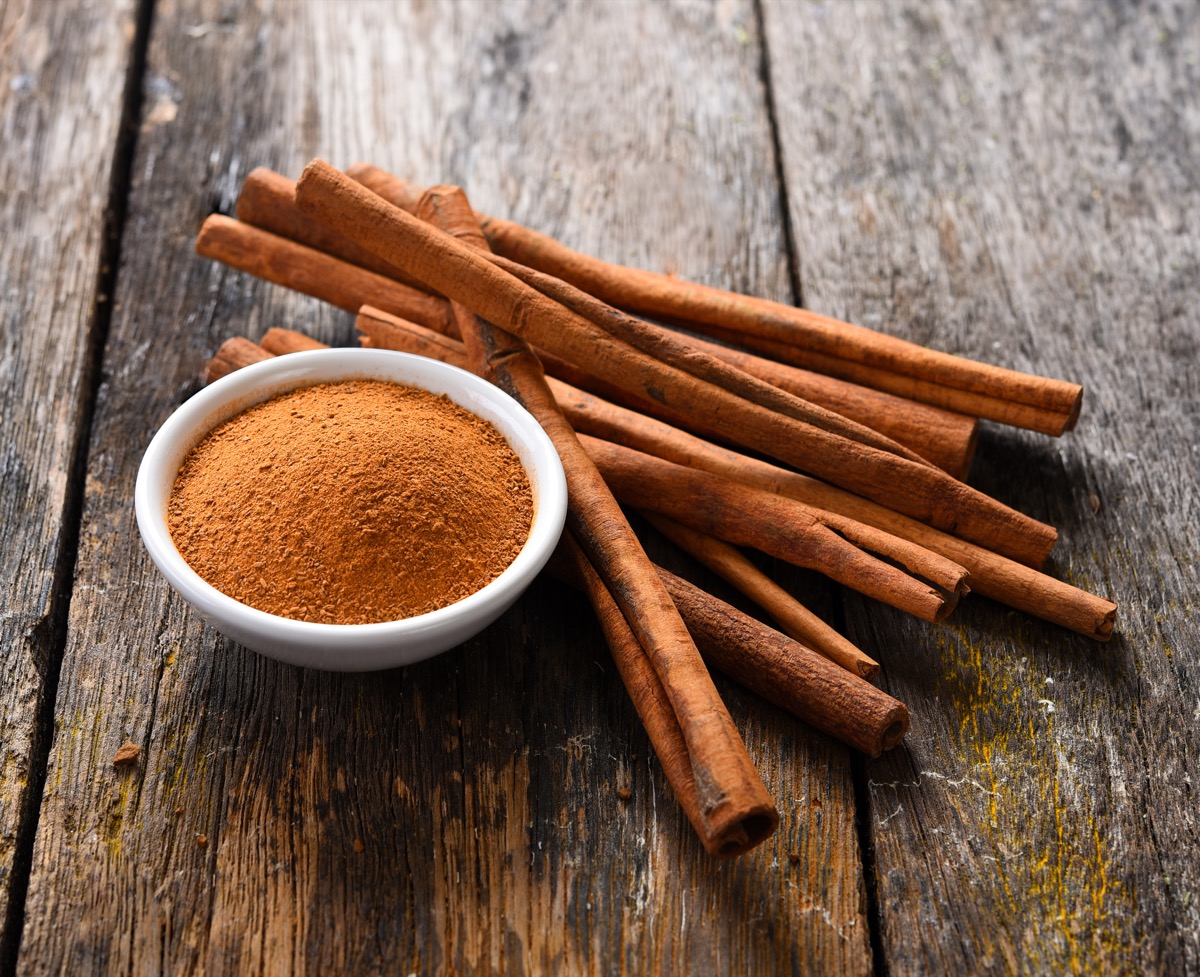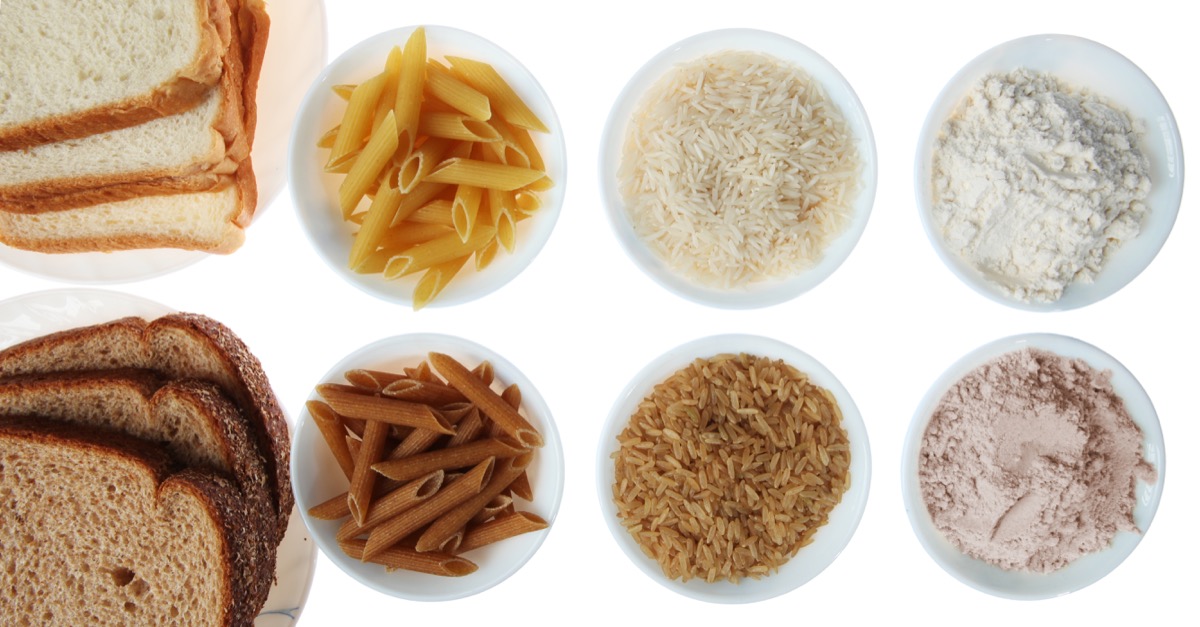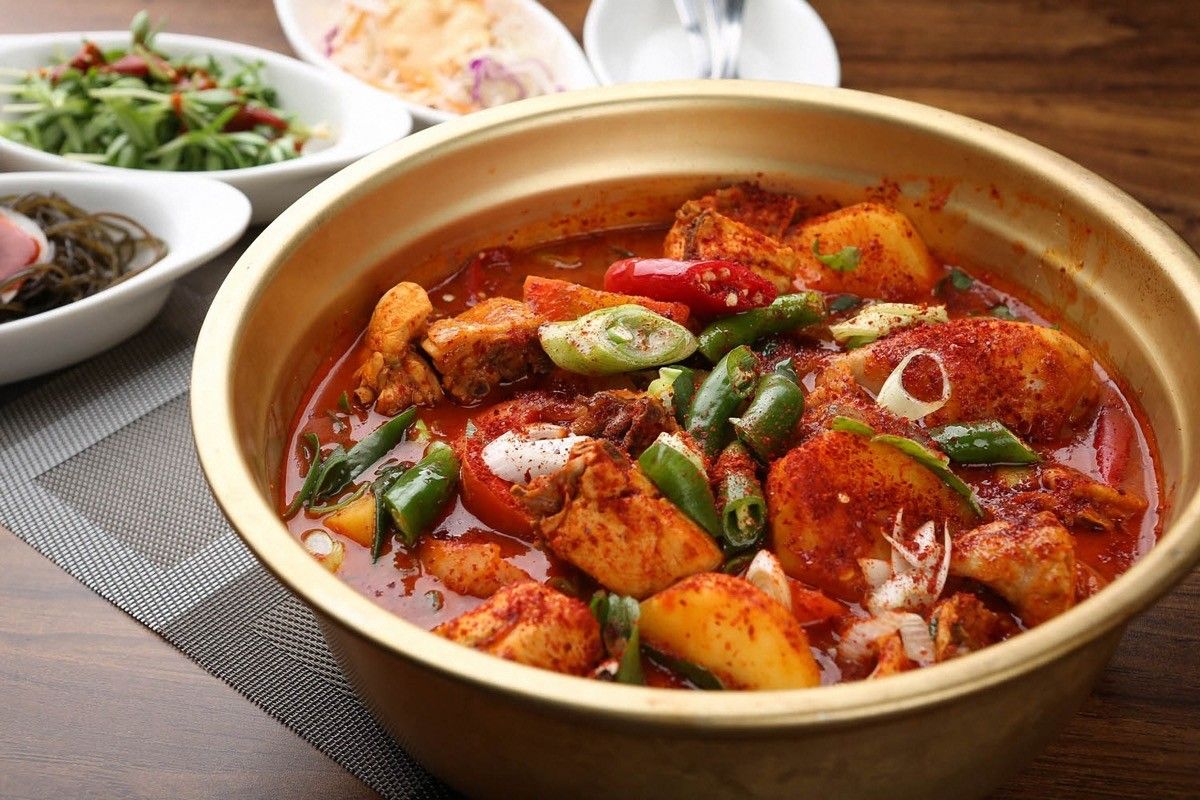When you’re eating by the handful, it’s easy to overdo it. That’s why Janet Detore, a registered dietitian for EMP180°, is a big fan of the fork method for weight loss. “If you’re grabbing snacks and not eating with a fork in your hand, you likely aren’t paying attention to what you’re eating and probably eating a lot more than you think,” she says. “Eat with a fork and put it down in between each bite.” Ever start munching on a snack standing in the kitchen, only to discover an empty bag a minute later? “We all fall victim to mealtime multitasking,” Detore says. “Distractions while eating can block the body’s signals of fullness. Sit down, take a deep breath, and mindfully focus on your food and your hunger. The more you enjoy your meal, the less you’ll eat of it.” Losing weight might simply mean brushing your teeth more often. It sounds too good to be true, but a 2016 study published in the journal Experimental and Therapeutic Medicine found that those who brushed their teeth after meals or snacks had lower rates of obesity than those who didn’t. “Nothing tastes good mixed with the mint!” Detore says. “Think drinking orange juice first thing in the morning. Bleh.” You might think the best way to lose weight is to skip meals, but that’s not the case. Detore is a fan of eating all day. “Some people will encourage fasting the entire day before a big meal to ‘save up calories,’ but this typically leads to an overeating spree that ends in a food coma and double (or triple) the day’s intended calories,” she says. “Eat healthy meals and snacks throughout the day to stay on track and avoid overeating.” If you’re a late-night snacker, try fasting between dinner and breakfast to cut down on calories for the day. “After you finish dinner, wait a full 12 hours until you have breakfast. You can still drink water, plain herbal teas, or hot water with lemon during that time,” says celebrity trainer Juliet Kaska. “For example, if you finish your dinner at 7:30 p.m., you can have breakfast at 7:30 a.m.—but no snacking is allowed between.” Good news: You can still enjoy a cup of coffee in the morning when you’re trying to lose weight. In fact, it might help. A 2019 study published in the journal Scientific Reports found drinking coffee can stimulate brown adipose tissue, or “brown fat,” which generates body heat by burning calories. “Increasing its activity improves blood sugar control, as well as improving blood lipid levels. And the extra calories burnt help with weight loss,” University of Nottingham professor Michael Symonds, who co-directed the study, said in a statement. If you start every day with a calorie-packed beverage from your favorite coffee shop, opt for something more weight loss-friendly. “Ask for a double green tea with steamed almond, soy, or oat milk,” says Kaska. “This is a high-antioxidant beverage with low calories, fat, and sugar. It also costs less than the calorie-laden lattes.” Alternatively, don’t spend a dime and make something healthy at home instead. Everyone overeats. But the next time you overindulge in too many carbs, sweets, or cocktails, don’t punish yourself the next day by skipping meals. Instead, get your body back on track by using a four-step method that’s a favorite of Kaska’s. “Start your day the following way,” she advises. “1. Drink 24 ounces of hot water with the juice of three lemons over a one- to two-hour period. 2. Take a spoonful of MCT oil. 3. Exercise for 20 to 60 minutes. And 4. After your workout, drink 8 ounces of organic (no sugar added) coconut water. By the time you get home and shower, you’ll feel like a new person. Keep drinking water and/or coconut water throughout the day.” It’s going to be hard to lose weight if you don’t first figure out what’s halting your progress. “Identify current habits that lead to unhealthful eating,” registered dietitian Katherine D. McManus told Harvard University. “Do you relax and reward yourself by snacking in front of the TV? Do you skip lunch only to feel starved by mid-afternoon, ready to eat anything in sight? Do you finish everything on your plate even after you start to feel full?” Once you know the habits that are setting you back, you can work on them. Are you hungry or emotionally hungry? McManus told Harvard it’s so important to be able to differentiate between the two—especially when trying to lose weight. “Do you eat when you feel something physical in your body that responds to food? Or do you eat when you are stressed, bored, tired, sad, or anxious?” she says. If it’s emotional hunger you’re dealing with, avoid overeating by coping in healthier ways, like going on a walk, engaging in a hobby, or doing yoga. When you have a delicious meal in front of you, it’s hard to slow down when you’re eating it. That plate is clean in seconds flat. But a 2018 study published in BMJ Open found that slower eaters and normal-speed eaters were less likely to be obese than fast-eaters. Taking your eating speed down a notch will help you feel fuller and more satisfied, not to mention allow you to truly enjoy your food. If slowing down your eating pace is tough, try the 20-second rule. “It’s my secret to mindful eating,” Kaska says. “I take 20 counts/seconds minimum between putting the next bite in my mouth. I also don’t start cutting my next bite until my present bite is gone. The sheer act of slowing down and being present with your meal results in eating less and enjoying your meal more. It also helps eliminate or lessen digestive issues like gas and heartburn.” Why is it that sweets always sound so good before bed? If you tend to be a late-night snacker, try to put the habit to rest this year. A 2017 study published in the American Journal of Clinical Nutrition found that eating at later hours could result in increased body fat. To slim down, stop snacking after dinner and create healthier nighttime habits instead. How many times have you said you were going to bed early, only to stay up a couple more hours scrolling on your phone? Sticking to a proper bedtime (and finally getting enough sleep!) not only helps keep your mental health in check—it also keeps the weight off. In an oft-cited 2006 study published in the American Journal of Epidemiology, researchers found those who got less than six hours of sleep at night gained more weight than those who slept at least seven hours a night. So ditch the phone and start counting sheep. Your waistline will thank you. Fiber is so underrated when it comes to weight loss. When you eat high-fiber foods—like broccoli, pears, apples, peas, and potatoes—you’ll feel full and satisfied, making you less likely to snack on calorie-packed junk food. So how much should you aim for? A 2015 study published in the Annals of Internal Medicine found 30 grams a day was the magic number when it came to losing weight. Everyone seems to be ditching meat in 2020 for their health, the planet, and the animals. Jumping on the plant-based bandwagon could benefit you greatly in the weight-loss department, too. In a 2016 study published in the journal BMC Nutrition, researchers found that the over-consumption of meat is leading to obesity worldwide. Instead, get your protein through the many plant-based options available, including beans, legumes, tofu, and tempeh. These days, most people have XL-sized bowls and plates, and that makes it very difficult to stick to proper portion sizes. “One of the main culprits of weight gain is overeating,” Detore says. “It can be easy to overpack your plate—and the bigger the plate, the bigger the meal. Use a smaller plate or bowl to easily cut back on portion size. Worst case scenario: You just go back for a small helping of seconds.” Sadly, alcohol calories do count, and they play a big role in your weight. Detore says abstaining from alcohol is the best way to lose weight, but if you do want to drink occasionally, go for lower-calorie, low-carb, and low-sugar options. “Stick to hard liquor like vodka, rum, and tequila because they’re free of carbs. And if you need to mix them, choose low-sugar and low-calorie drinks like soda water,” she says. “Steer clear of beer, which is typically high in carbs. Also avoid wine, which contains a lot of sugar.” It doesn’t matter whether you use a notebook or an app. Logging everything you eat in a day can really help you reach your weight loss goals. A 2019 study published in the journal Obesity found that those who logged their daily food intake lost 10 percent of their body weight over a six-month period. It only took them 15 minutes a day to jot everything down, and it made all the difference.ae0fcc31ae342fd3a1346ebb1f342fcb You don’t have to be that person who posts a photo of every meal on Instagram, but taking pictures of your food can help with losing weight. “Snapping a photo before digging in can help you stay accountable with your health goals. Plus, it can boost appreciation for food and encourage you to seek out colorful and delicious ingredients for your next photogenic meal,” Detore says. “Extra points if you keep a food diary with photos of everything you eat.” Most people choose running on the treadmill over yoga for weight loss. Sure, it burns more calories, but that number isn’t everything. One study found the mental health benefits you get from yoga can help you lean out in the long run. A 2016 study published in the journal Evidence-Based Complementary and Alternative Medicine found that going the low-impact route with yoga can help you change your habits for the better. Yogis did less stress eating, ate more mindfully, had fewer cravings, and had a reduced appetite, all of which aided in weight loss. Lifting weights isn’t going to make you look bulky. In reality, it’s a great way to burn calories, tone your muscles, and shed fat. In a 2017 study published in the journal Obesity, researchers found that combining weight training with a low-calorie diet is the best way to lose fat and preserve muscle. One of the biggest mistakes people make when starting their weight loss journey is overdoing it with their workout routine. For the best results, take your time and get used to everything. “Don’t start off by jumping into the deep end. Instead, take it slow,” Kaska says. “Try a one-mile walk at a pace that gets your heart pumping, but don’t wipe yourself out. Measure the time it takes you to complete the one mile, and do it four to seven days a week. Then after one week, try to increase your time [and] distance.” Some people like working out with food in their stomach, and some don’t. There’s a reason to give fasted exercise a try, though. According to William Kormos, MD, working out while your body is in a fasting state can result in your body burning more stored fat. “During exercise, after your body’s sugar stores are exhausted, the body then taps into stored fat and turns that into sugar or turns protein from muscle into sugar,” he told Harvard University. Whether the hypothesis is true or not, he says the most important thing is working out in the first place. There are so many great shows on Netflix right now, but that doesn’t mean you should watch all of them. (Sorry!) Sitting in front of the TV all day, every day is a recipe for disaster when it comes to your weight. In a 2015 study published in the International Journal of Environmental Research and Public Health, researchers noted being sedentary for long periods of time—especially while watching TV—was directly related to “weight gain, heart disease, diabetes risk, and an increased risk of early death.” Find something active to do instead, even if that’s just going on a walk. Stress doesn’t just drive you crazy mentally—it also affects your body physically. In a 2017 study published in the journal Obesity, researchers found that having chronically elevated levels of the stress hormone cortisol can contribute to weight gain and obesity. Soothe your stress away with yoga, meditation, and hobbies you enjoy. To weigh yourself or avoid the scale altogether—that is the question. If that number is messing with your mental health, skip it and just work on being healthy. But if you want to keep track of your weight, it could help with your progress. A 2017 study published in the Journal of Behavioral Medicine found those who weighed themselves daily had a lower body mass index (BMI) and body fat percentage over time. The second you label a certain food as “bad,” you’re going to crave it that much more. Instead, don’t make anything 100 percent off-limits. “Focus instead on choosing the right portions of healthy foods 80 to 90 percent of the time,” registered dietitian Jennifer Kothe Willoughby told the Cleveland Clinic. “That, paired with a healthy exercise routine, can lead to long-term weight loss success. And it leaves some wiggle room to enjoy ‘fun foods’ occasionally without feeling guilt or resentment.” The microscopic bacteria that lives in your gut is totally on your team in helping you lose weight—well, as long as you take care of it. Probiotics (AKA good gut bacteria) are great for your digestive health and keeping your gut happy, and taking them daily could help you reach your goals. A 2014 study published in the British Journal of Nutrition found that obese individuals who took probiotics lost significantly more weight than those who didn’t. A grapefruit a day keeps the weight away? That’s what research shows. In a 2014 analysis published in the journal Food & Nutrition Research, researchers looked at data over a five-year period and found that those who consumed any amount of grapefruit or grapefruit juice had a lower body weight, waist circumference, and BMI than those who didn’t. If it feels like you’re addicted to certain foods, you’re not crazy. Some are more crave-worthy than others, and those are the kinds you should limit in your diet. “If your diet consists mainly of sugar, saturated/trans fats, and salt—all of which can be very addictive—you can develop consistent cravings for dense, high-calorie foods with little nutritional value,” registered dietitian Julia Zumpano told the Cleveland Clinic. “This leads to excess calories and weight gain or inability to lose weight.” Sugar is one of the biggest things that can come between you and losing weight. Harvard University professor Frank Hu, MD, told Harvard Health Publishing that consuming too much not only raises your blood pressure and increases chronic inflammation, but also contributes to weight gain. To cut back, pay close attention to food labels. “It might only say 5 grams of sugar per serving, but if the normal amount is three or four servings, you can easily consume 20 grams of sugar and thus a lot of added sugar,” said Hu. Spinach is one of the healthiest foods you can eat. If you can’t get enough greens down during the day, there’s another method you can use to help you shed the pounds. A 2014 study published in the journal Appetite found spinach leaf extract can help decrease cravings and aid in weight loss. Do like the participants and drink a smoothie that contains the supplement first thing in the morning. Drinking water is quite possibly the easiest weight loss tactic, yet it always seems to be the one thing no one does. A 2016 study published in the journal Frontiers in Nutrition found that increasing your daily water intake can help you lose weight. Invest in a nice water bottle, and even try adding fruit to your water to make it more flavorful. Whatever gets you to sip. One of the easiest ways to take in fewer calories during the day is making sure you’re properly hydrated before sitting down to eat. A 2010 study published in the journal Obesity found that drinking a half-liter of water 30 minutes before your meals can help with weight loss. In fact, over a 12-week period, those who drank water prior to meals lost 44 percent more weight than those who didn’t. You don’t have to give up your favorite restaurant dish for good. If you want to lose more weight, maybe just give it up for a while. A 2017 study presented at the American Heart Association’s 2017 Scientific Sessions found that those who went out to eat had a 60 percent chance of ordering something unhealthy and ruining their diet. Focus on cooking healthy homemade dinners instead. Before-and-after pictures can be intimidating, but they can actually help you reach your weight loss goals. A 2017 study published in the Journal of Interactive Marketing found that sharing photos of your progress can be motivating in helping you shed the pounds. But if you don’t want everyone to see your progress, no worries—just keep the photos to yourself. They’ll still serve as motivation when you need it. How many times do you go to the grocery store to buy something unhealthy for dinner when you already have a refrigerator full of wholesome meal options at home? To stay on track—and avoid giving into cravings—plan out your meals in advance and only allow yourself to grocery shop one day a week. “Get your shopping done on Sunday to start your week off right,” Kaska says. “In addition to being healthy and keeping calories in moderation, having your meals and snacks planned out and ready to go will help you feel less stressed and more motivated.” Snacking on fresh fruit and veggies is easy at home, but it’s easy to go off the rails when you’re out and about. Plan ahead and pack healthy options to take with you, or have some quick fixes in mind you can reach for when you’re empty-handed. Starbucks, for instance, has bistro boxes loaded with fruit, veggies, and protein, and many gas stations carry snack-size bags of baby carrots and sliced apples. You can also go for a handful or two of unsalted nuts for a filling healthy fat. Eating cinnamon isn’t going to help you shed a ton of pounds on its own, but research shows it could help aid in the weight loss process. According to a 2017 study published in the journal Metabolism: Clinical and Experimental, researchers found the chemical compound that gives the spice its flavor—called cinnamaldehyde—could help fat cells burn energy in your body, helping you drop pounds. Who cares what your co-workers think? If you take your lunch break earlier rather than later—even if you’re the only one who does so!—you’ll be the one who’s better off in the long run. A 2013 study published in the International Journal of Obesity found that those who ate late lunches lost less weight—and lost weight at a slower pace—than those who ate lunch earlier. So, 11:30 a.m. lunch, here you come. If you have potato chips sitting on your counter at home, you’re going to eat them. That’s a fact. The same goes with healthier choices like fruit. A 2015 study published in the journal Health Education & Behavior found that those who got rid of junk food and kept fruit on their counters instead had a lower BMI. When you have an apple or banana within arm’s reach, you’ll be more likely to grab it, and help the pounds fall off. Avocados might just be the most popular fruit of the moment. Aside from making a stellar toast topping, they’re also beloved for their ability to help people lose weight. A 2019 study published in the journal Nutrients found that overweight individuals who added a whole or half avocado to one of their daily meals felt fuller and more satisfied after eating than those who ate low-fat meals. By helping you suppress your hunger, you’re more likely to lose weight. There are plenty of healthy carbs you can eat while trying to lose weight. Just avoid the white ones. A 2010 study published in the American Journal of Clinical Nutrition found that eating refined grains—like white rice, white bread, and white pasta—contributed to more body fat. On the other hand, eating whole grains—including brown rice, oats, quinoa, and whole grain pasta and bread—was associated with lower amounts of body fat. One simple way to avoid overeating is to sip on a warm cup of low-sodium vegetable broth before meals, Kaska says. Aside from being super soothing (and tasty!), it helps you fill up more quickly, making it easy to cut down on calories and shed those extra pounds. Salt makes everything taste better. Unfortunately, while upping the flavor, you could also be upping the number on the scale. In a 2017 study published in the journal PLOS One, researchers found that there’s a link between salt intake and obesity. To make sure you’re not going overboard, stick to the recommended daily limit of 2,300 mg of sodium per day. Going above that can not only result in weight gain, but also increases your risk of high blood pressure, heart disease, and stroke. It’s about to get hot, hot, hot in your kitchen. If you’re a fan of spicy foods, keep on doing your thing. A 2012 study published in the journal Chemical Senses found that eating spicy foods that contain capsaicin—the chemical compound in chili peppers that makes your mouth burn—may help with weight management. Losing weight is much easier if you have a support system… and a good friend by your side. A 2015 study published in the British Journal of Health Psychology found that working out with someone helps you stick to your routine, and—you guessed it!—lose weight in the process. Whether it’s someone you already know or someone you befriend at the gym, having that support goes a long way. Walking after meals doesn’t just up the amount of physical activity you’re getting every day—it also helps you better digest your food. “Take 10-minute walks after each meal,” Kaska says. “This will help to keep your digestive fire burning after you eat when your body is sending the most blood to your stomach. It will also help to remove any excess pounds you may have gained.” Breathing to lose weight? It’s not too good to be true. Being stressed 24/7 can make you gain weight, but the simple act of deep breathing can relax your body, helping you reach your goals. “Deep breathing has been proven to activate the vagus nerves. When the vagus nerves are stimulated this, in turn, deactivates your stress response, otherwise known as the fight-or-flight response,” Kaska says. “When we’re anxious and stressed out, it’s as if the fight-or-flight button is stuck on. Take deep, long breaths into your stomach, imagining your stomach like a balloon you’re filling with air. Then slowly exhale all the air out. Do 10 rounds or more of this deep breathing daily.”
